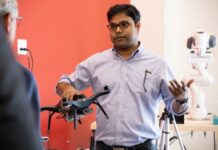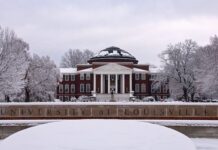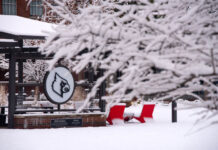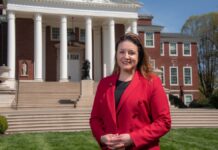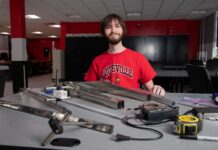In the past few years, IT has taken a number of opportunities to embrace more sustainable practices. Used items such as servers, racks, printers and network equipment are repurposed or recycled.
“We were looking for ways to reduce our environmental footprint by repurposing and recycling old equipment,” said Deepak Sharma, director of IT technical support and operations. “We continue to identify opportunities to save energy and increase equipment lifespan, while also increasing data center efficiency and reducing costs for the university.”
IT has replaced old, less efficient equipment with new hardware. For example, IT recently replaced several old servers with new, more energy-efficient models, saving 14 kW of power. Each new server has a useful life of 15 to 20 years. The Virtual Tape Library, a disk subsystem for backups, has been replaced with larger, energy-efficient systems, saving 4 kW of power. Another 8 kW of power has been saved by replacing multiple storage units. IT has increased power density in server racks, saving floor space and cooling requirements. The data center has maintained its power consumption while increasing the number of servers three-fold. Finally, the Tape Library in MedCenter 3 is scheduled to be decommissioned by June 2013, saving 4 kW of power, freeing up floor space and reducing cooling requirements.
Another data center initiative is a strategy called virtualization. Physical servers are consolidated, reducing the data center’s carbon footprint by saving power and increasing system operating efficiencies. To date, more than 600 physical servers have been virtualized and replaced with 14 physical servers, significantly reducing power, floor space and cooling needs.
Cooling requirements have been further reduced through a process called cold aisle containment. Rather than cooling an entire room, this strategy works by trapping cold air around IT equipment. Thick plastic sheets hang from the ceiling, surrounding servers and other hardware and keeping cool air where it is most needed. Raised floors improve airflow dynamics. The strategy achieves energy savings by allowing higher ambient temperatures in the surrounding room. Cold aisle containment also protects crucial data center equipment in the event of a power or cooling failure.
IT also has equipped the data center with overhead cabling. Keeping cables above rather than below hardware provides better airflow under floor tiles, resulting in additional power savings. Environmental control panels allow IT employees to maximize equipment efficiency and monitor the data center’s power usage.
Information Technology is dedicated to continual improvement in its sustainability initiatives. The department is working to increase efficiency and reduce its environmental footprint, all while providing UofL with the reliable technology systems its students, faculty and staff depend on.







